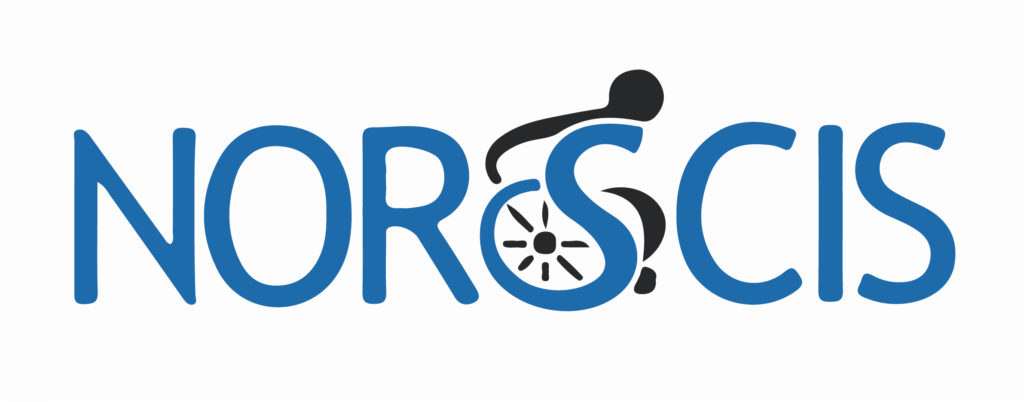The Northeast Ohio Regional Spinal Cord Injury System (NORSCIS) provides a comprehensive, multidisciplinary approach to the care of individuals with spinal cord injury (SCI). NORSCIS is funded by the National Institute on Disability, Independent Living, Rehabilitation Research (NIDILRR) and was recently refunded for another 5 years as 1 of only 14 federally-funded centers. NORSCIS is based at MetroHealth and provides a comprehensive continuum of care for individuals with traumatic SCI, including emergency medical services, acute care services, acute medical rehabilitation services, and post-acute services.

NORSCIS also conducts high-quality research targeted at reducing SCI’s health burden by generating evidence-based interventions. Another important component is that we contribute to the National Spinal Cord Injury Database. During each funded cycle, we enroll participants into the National SCI Database.
As part of this nationwide study, we collect clinical outcomes, social and psychological outcomes, and quality of life data on all new traumatic SCI at the time of admission to inpatient rehabilitation throughout the person’s lifetime. Through this long-term nationwide study, critical knowledge has been gained about the incidence of SCI, recovery characteristics, secondary conditions during and after rehabilitation, and the medical and psychosocial impact of living with SCI long-term.
The Team
There are several people on the NORSCIS team that you may or may not know. The team is led by Dr. Kim Anderson, who is a Professor focused completely on SCI research, and who also has a cervical SCI herself. Dr. James Wilson is the co-leader, is an Assistant Professor, and is the Director of SCI Rehabilitation. Megan Hammond is the Program Manager and her role is to help keep all the moving parts together. Megan has a thoracic SCI from a motorcycle accident in 2007, but you may know her as the President of the United Spinal Association Northeast Ohio Chapter.

Dan Nwosu is our other research coordinator and joins us from Case Western Reserve University. Working with our two research coordinators are research assistants Don Johnston and Mark Keider. Don is a long-time wheelchair user after sustaining a spinal cord injury as a young child and Mark is a caregiver for his son that has a spinal cord injury. Dr. Christina Oleson is a Professor and SCI physiatrist and Dr. Michael Kelly is an Assistant Professor and neurosurgeon and are both co-investigators in specific studies.
Our Site Specific Project
Our major research study for the next five years is testing the ‘Feasibility of Early Gabapentin as an Intervention for Neuroprotection’. Overall, emerging animal and human evidence suggest that early initiation of low to medium doses of gabapentin and continued delivery for a range of 2 weeks to 4 months has a persistent, positive effect on motor and autonomic neurologic recovery. The objective of this study is to conduct the first-ever prospective, dose-exploration trial to test the feasibility of early administration of gabapentin as an intervention for neuro recovery. Many people may use or have used gabapentin to try to manage pain after SCI. It does not always work for everyone, and often high doses are used, which can lead to negative side effects. In the new study, it is important to not think about gabapentin as how it is used for pain. Rather, can lower doses of gabapentin started very early after the initial injury help promote movement, feeling, and other types of recovery?
Collaborative Projects
We will also be leading 1 multi-center collaborative study and participating in 2 other multi-center collaborative studies.
Lead study – We will be validating the MENTOR tool to describe bowel dysfunction in the inpatient rehabilitation setting and see if it facilitates management across the 1st year post-injury. We know that improving bowel function is an important priority to people living with SCI. There are many options for bowel care, but there has not been a clear definition of treatment failure or guidance regarding when to change strategies. These shortcomings contribute to people with SCI living through prolonged periods of poor bowel management.
There is no validated clinical decision-making tool to guide neurogenic bowel management during the acute and subacute periods after SCI. Recently, the Monitoring Efficacy of NBD Treatment On Response (MENTOR) tool was developed and validated in the early chronic to chronic period to allow informed, shared decision making by the clinician and the person living with SCI in bowel management. If the clinical goal is to best improve bowel management, then person-specific tailoring should begin early after injury with a valid clinical decision-making tool and this is what we will be testing.
Other studies – One of the other studies we will be participating in is also about bowel function, how it interacts with bladder function, and how it impacts the quality of life. This will involve people with new SCI as well as those who have been living with SCI for 5 or more years. This study is being led by Rancho Los Amigos rehabilitation center in Los Angeles, California. The other study we will be participating in is about physical activity and exercise. This will involve people who have been living with SCI for 1 or more years. This study is being led by the University of Minnesota rehabilitation center in Minneapolis, Minnesota.
The contents of this article were developed under a grant from the National Institute on Disability, Independent Living, and Rehabilitation Research (NIDILRR grant number 90SIMS0007). NIDILRR is a Center within the Administration for Community Living (ACL), Department of Health and Human Services (HHS). The contents of this newsletter do not necessarily represent the policy of NIDILRR, ACL, HHS, and you should not assume endorsement by the Federal Government.
